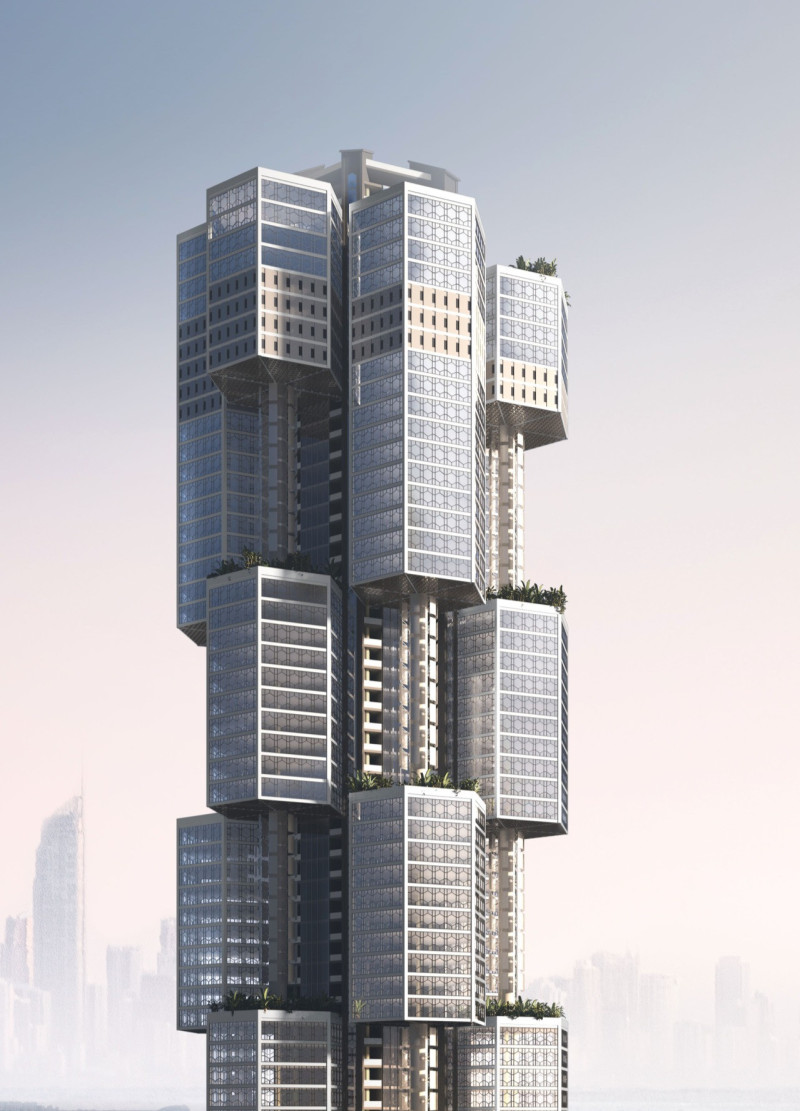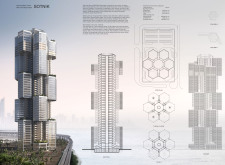5 key facts about this project
The Bee-cell Skyscraper, known as SOTNIK, is located on Hainan Island in the Sanya district, along the South China Sea. It features a modern design that consists of a 250-meter-high tower and a parking structure. This design focuses on improving urban connections through careful planning of internal driveways and walkways that enhance accessibility throughout the site and encourage interaction among users.
Building Layout
The layout of the Bee-cell Skyscraper is thoughtfully organized to serve various functions. The ground floor acts as a welcoming entry point, containing a lobby that connects to office spaces, food and beverage shops, and a floating landing stage. This design draws in both pedestrians and vehicles, creating an active atmosphere. Above, the first floor is reserved for retail spaces, promoting a vibrant commercial environment.
Upper Levels
The upper levels of the tower, from the second to the forty-second floor, are designed for office use and include open green landings that provide outdoor spaces within a work setting. Such integration enhances the well-being of occupants by connecting them with nature. The higher floors, between the forty-third and fifty-second, offer administrative offices, a health club complete with a swimming pool, restaurants, and utility rooms, allowing the building to accommodate a variety of activities.
Sustainability and Technology
SOTNIK incorporates advanced systems that promote sustainability. It operates as a self-sufficient life support system, equipped with features for recycling waste products. Wind turbines provide part of its energy needs, reflecting a commitment to using renewable resources. Together, these elements create an environmentally friendly building that supports modern sustainability efforts.
Material Application
The structural framework of the skyscraper utilizes advanced polymer materials, specifically carbon fibers, which are lighter than traditional metals. This choice enhances the building's strength while allowing for a more efficient design. The visible support elements play a role in the overall aesthetic, as they are integrated into the interior spaces, contributing to a cohesive and modern appearance.



















































